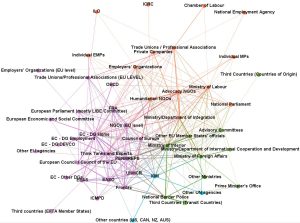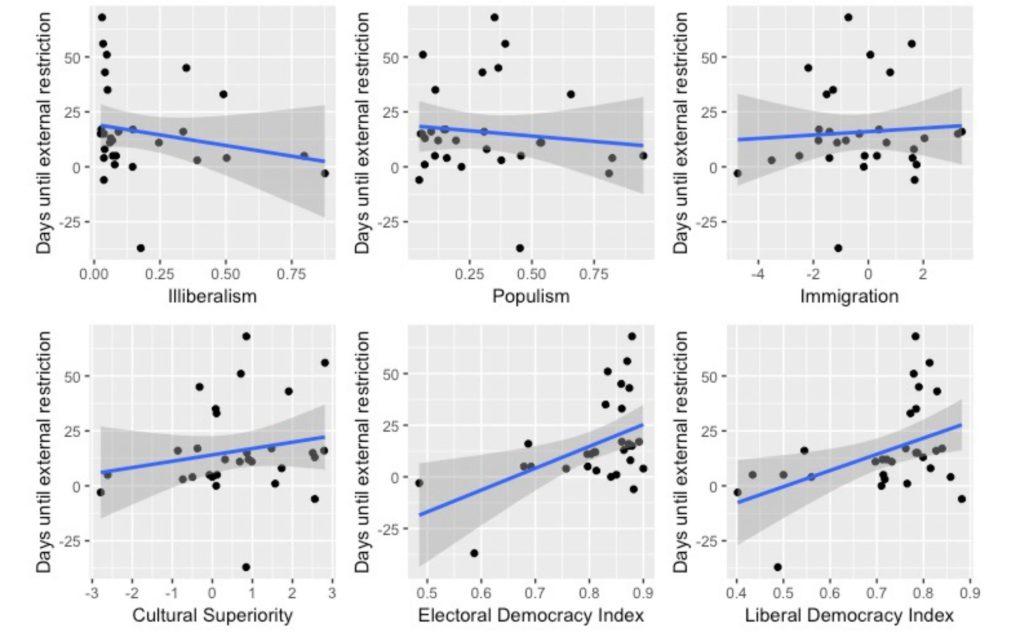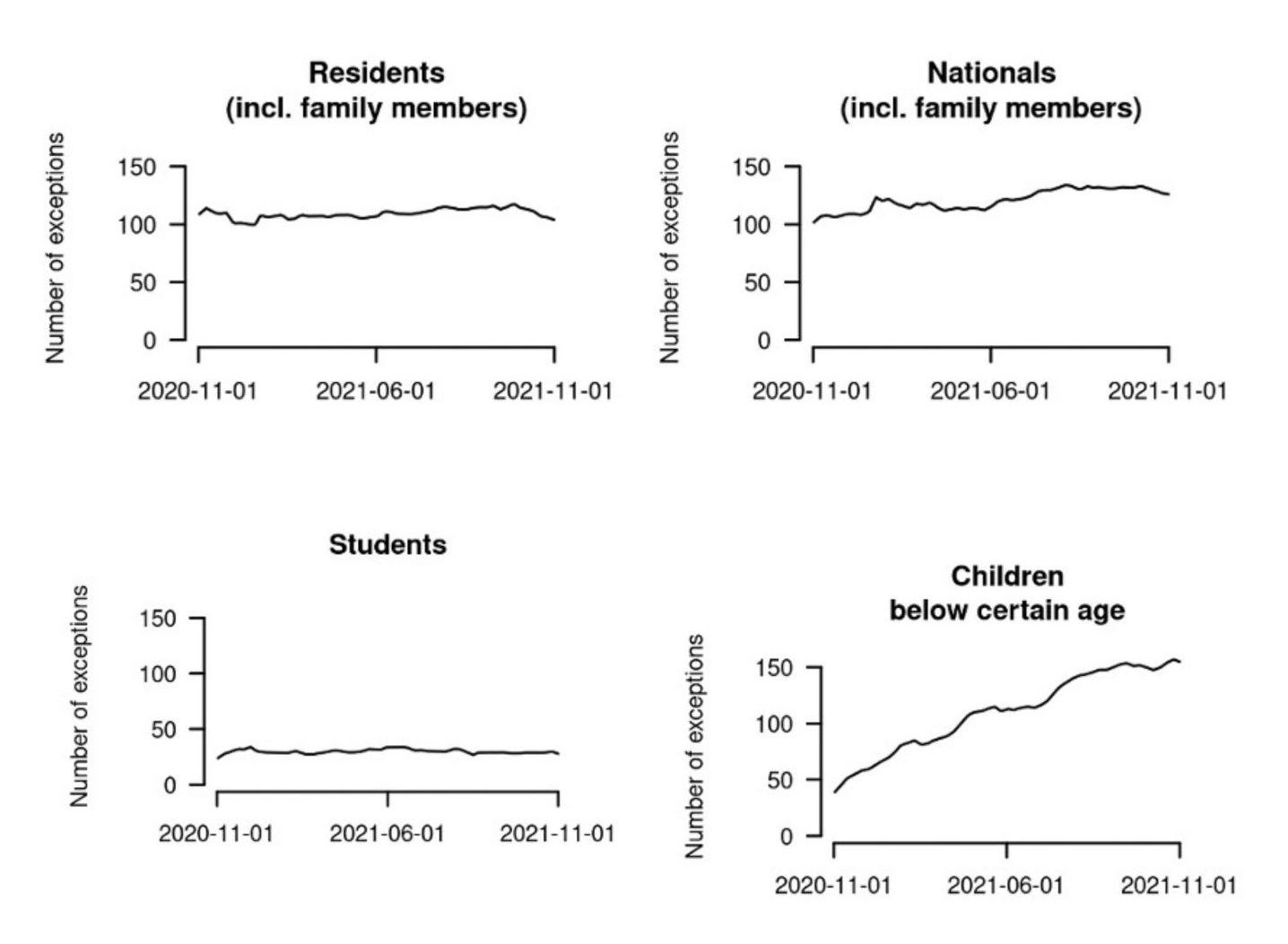
Read more
Blog, Migration Governance
Plus ça change, plus c’est la même chose: the puzzling "status quo tendency“ in EU migration policy
In many ways, a lot has changed in migration policy in the European Union in the past few decades. There were far reaching institutional changes that resulted from the Lisbon Treaty and an expansive...
Authors: Lorenzo Piccoli (EUI), Jelena Džankić (EUI), Didier Ruedin (University of Neuchatel), and Timothy Jacob-Owens (EUI and University of Edinburgh).
Acknowledgment: This research is a collaboration between GLOBALCIT, the Migration Policy Centre, and the NCCR on the move and is concurrently being posted on these platforms.
Every government in the world introduced restrictions to human mobility in response to the COVID-19 pandemic. While such restrictions constituted a global phenomenon, they were by no means globally uniform, varying greatly between and within states, as well as over time. In a research note published in the International Migration Review, we argue that the global scale and variation of COVID-19 mobility restrictions may open new avenues for social scientific inquiry. Early studies of the restrictions focused on their epidemiological effects and their impact on patterns of human movement. By contrast, our findings suggest that the global variation in the restrictions as such and its implications to the ‘global mobility regimes’ – the legal and policy frameworks producing unequal opportunities to travel across and within state borders – are also significant in themselves.
What Can We Learn from Previous Public Health Emergencies?
Research on mobility restrictions introduced during previous public health emergencies generated five key insights.
- During pandemics, countries limit human movement not only in response to changing global epidemiology but also based on other criteria, including diplomatic and economic considerations.
- During pandemics different communities tend to use broadly similar measures to curtail human mobility.
- Travel restrictions introduced during pandemics cause significant economic disruption to affected communities.
- Restrictions have often been accompanied by exceptions for specific groups based on their legal or professional statuses.
- Restrictions have sometimes outlasted the emergency they were meant to contain, creating new categories of desirable and undesirable travellers.
These earlier research findings convinced us to study the travel restrictions introduced during the COVID-19 pandemic to further improve our understanding of mobility, migration, and citizenship governance. We thus propose five research avenues to examine such restrictions in the context of the COVID-19 pandemic. In each case, we provide an illustrative example of the kind of analysis that could be done.
What Can We Learn from COVID-19?
The drivers of COVID-19 mobility restrictions
The global variation in COVID-19 mobility restrictions raises the question of why different governments made different policy choices in response to the pandemic. The drivers of these choices could include, for example, medical and epidemiological concerns (e.g., number of cases in the target countries), party ideology (e.g., liberal governments may be more reluctant to restrict mobility), transnational alliances (e.g., formal trade and mobility agreements between countries may limit the introduction of reciprocal travel bans), policy learning (e.g., experience with previous epidemics like SARS, MERS or Ebola), structure of government (e.g., federal countries may be slower to introduce restrictions), and economic policy (e.g., reliance on migrant workers may push states not to restrict labour-based mobility). Furthermore, we expect domestic and international mobility rules to be driven by different sets of expectations and policy dynamics.
Figure 1. Timing of the first international mobility restriction introduced, correlated with party ideology and level of democracy (EU and EFTA countries)
Source: Own elaboration based on Cheng et al. 2020; Coppedge et al. 2021; Lührmann et al. 2020; Piccoli et al. 2020b.
Patterns of policy convergence and divergence
Comparative political scientists can reveal patterns of policy convergence and divergence and explore international policy diffusion over time. For example, in June 2020, most states restricted entry, but only a few deployed public health measures (such as a test or screening). as conditions for border crossing By June 2021, the number of travel bans decreased, while the number of public health measures regulating entry significantly increased.
Figure 2. Evolution of international travel restrictions by type between March 2020 – October 2021
Source: Own elaboration based on IOM (2021).
The legality of mobility restrictions
The scope and duration of COVID-19 mobility restrictions raise questions regarding their compatibility with pre-existing legal norms permitting human movement. Article 12(4) of the International Covenant on Civil and Political Rights, for example, provides that “no one shall be arbitrarily deprived of the right to enter [their] own country”. However, countries including Australia and Morocco have prevented the entry of their own citizens, thus potentially acting in breach of their international human rights obligations. Legal scholarship might also assess the constitutionality of internal mobility restrictions – that is, their compatibility with domestic constitutional norms limiting the reach of government powers and protecting fundamental rights, such as freedoms of association and assembly.]
Continuity and change in global migration policy
COVID-19 mobility restrictions did not target all individuals uniformly but rather depending on their country of origin and legal status (e.g. citizen, temporary resident, asylum seeker). In this way, the restrictions exemplified a broader trend in contemporary migration policies, which operate as a selection mechanism based on similar characteristics. For example, an assessment of which migrant workers were exempt from international border closures – such as medical staff, transport personnel, or agricultural workers – could explore trends in the understanding of ‘essential’ labour migration during the pandemic.
Figure 3. Evolution of the exceptions to international travel restrictions between November 2020 – November 2021
Source: Own elaboration based on IOM (2021).
Citizenship and international mobility rights
Since before the pandemic, the right to cross state borders has been closely tied to a person’s citizenship, with much greater international mobility rights traditionally accorded to citizens of states in the Global North. COVID-19 mobility restrictions raise questions regarding the continued importance of citizenship for international mobility rights during the pandemic, for instance whether citizens were still permitted to return their country of origin and whether citizenship of Global North states continued to guarantee more far-reaching international mobility rights.
Figure 4. Relative decline in the number of countries that selected passport-holders could access without a visa
Source: Own elaboration based on Recchi et al. 2020 and Piccoli et al. 2020a.
What Can We Learn from this Research?
Taken together, these five research avenues can advance our understanding of the effects of a public health emergency on the global mobility regime. We invite scholars to focus on restrictions to human mobility introduced during the COVID-19 pandemic and explain their drivers, their evolution over time, their legality, their relationship with pre-existing mobility controls, as well as the uneven effects they had on different groups of travellers. This public health emergency offers an unprecedented opportunity to examine mobility restrictions, given both the global scope and variation of the restrictions imposed and the wealth of available data capturing them.
Use These Resources to Further Explore The Topic
Database: International travel restrictions in response to the COVID-19 outbreak dataset. EUI Research Data: Robert Schuman Centre for Advanced Studies and nccr – on the move. An interactive visualisation is available online.
Database: Mobility and border control in response to the COVID-19 outbreak dataset. EUI Research Data: Robert Schuman Centre for Advanced Studies and nccr – on the move. An interactive visualisation is available online.
Website: Citizenship, Migration, and Mobility in a Pandemic cmm-pandemic.com.





